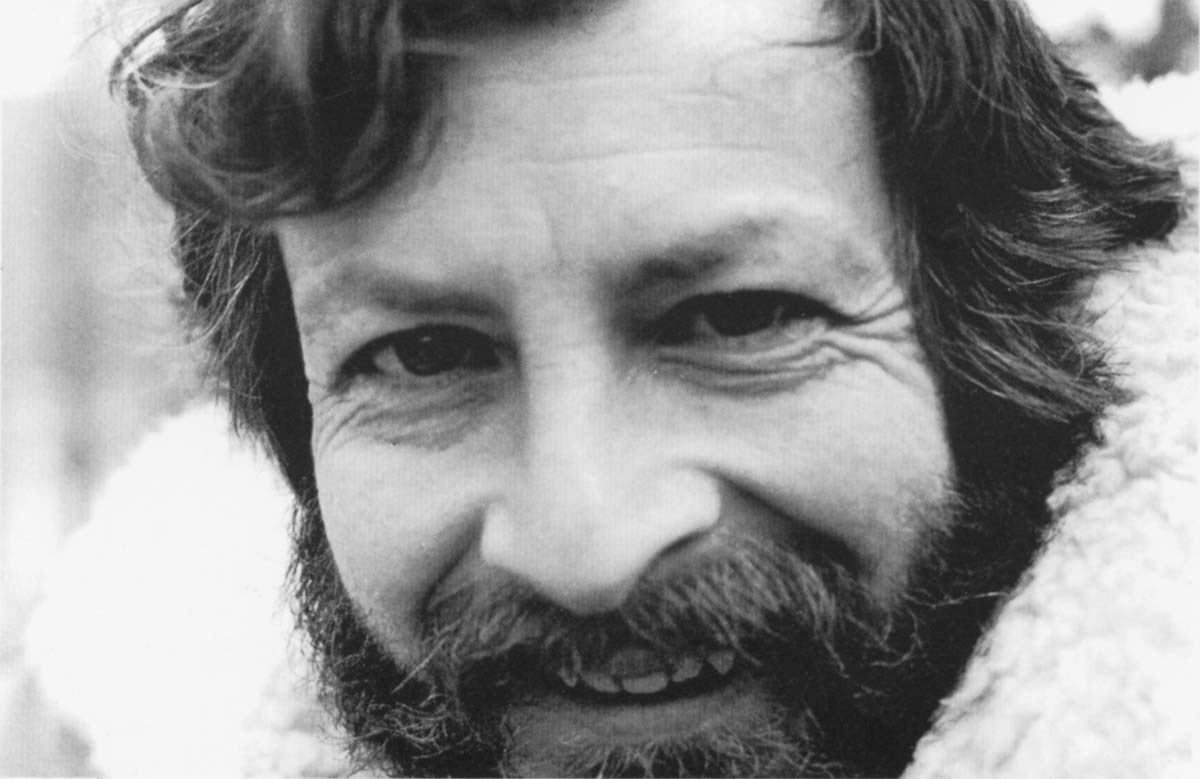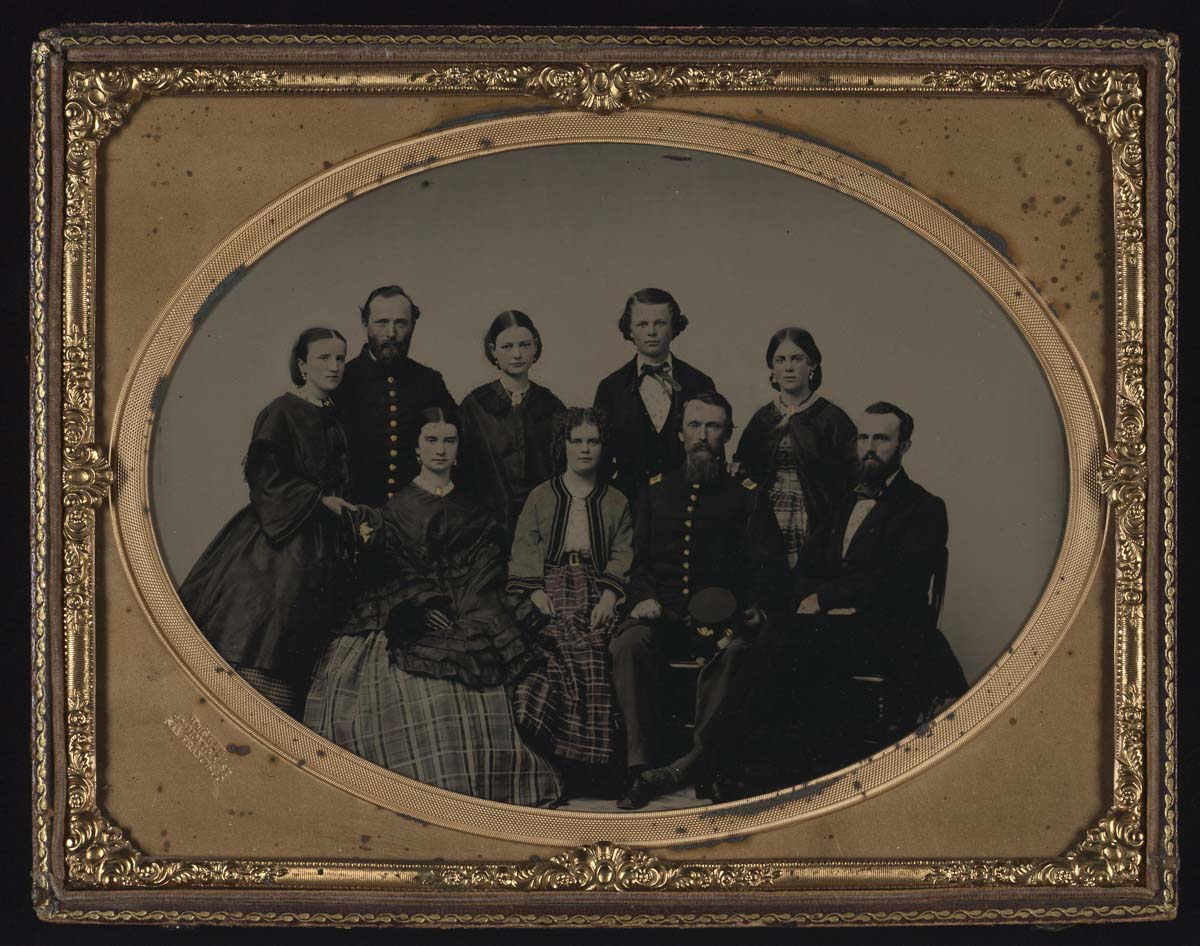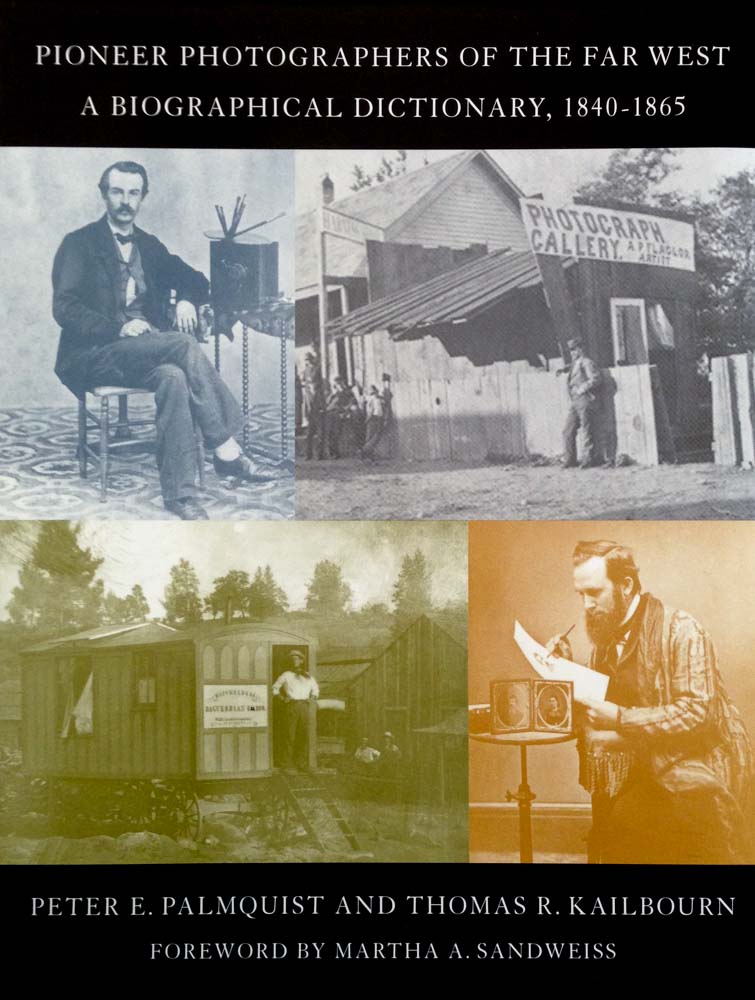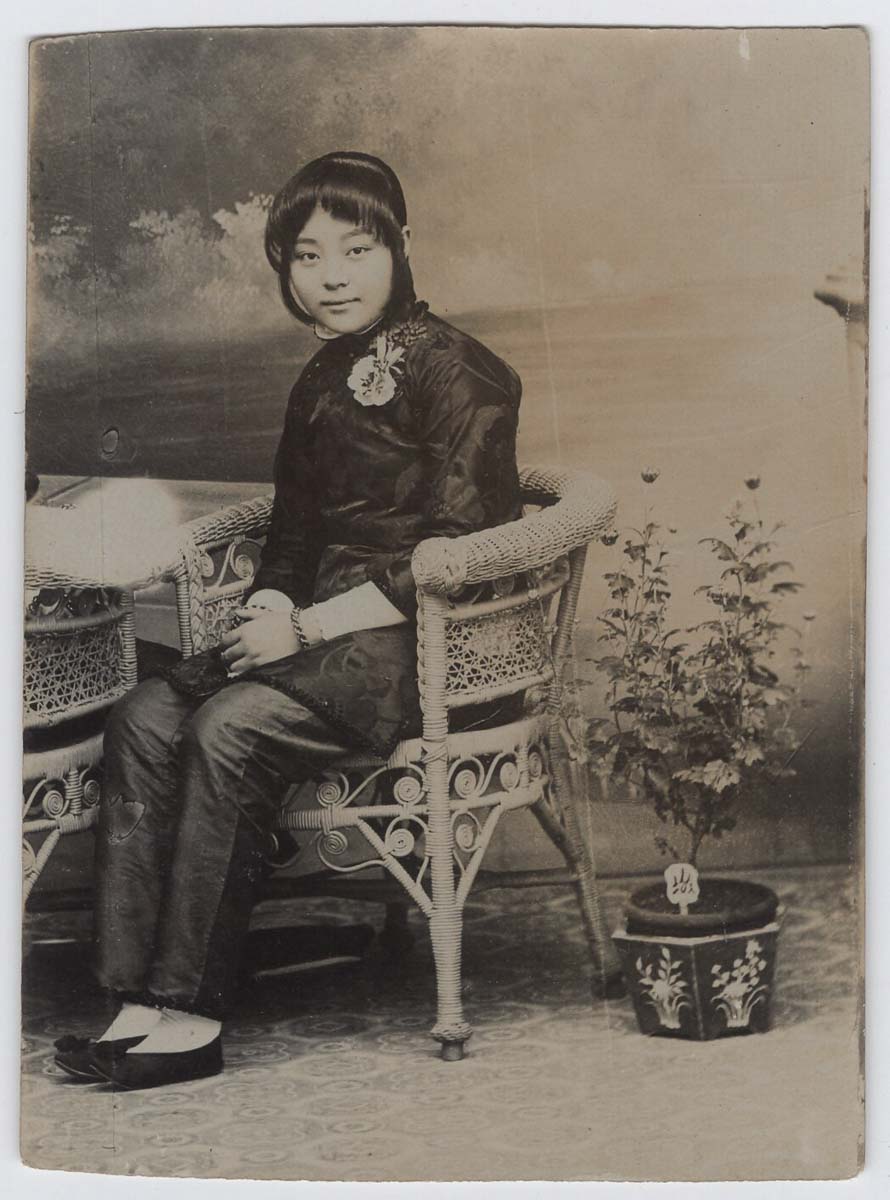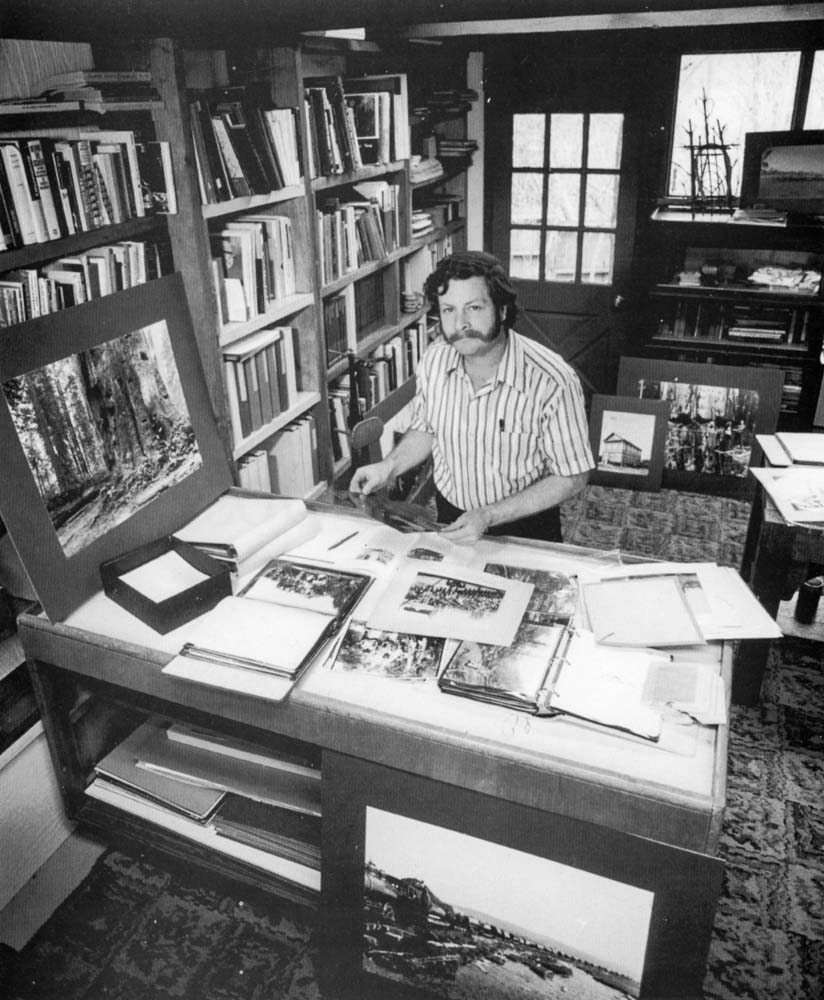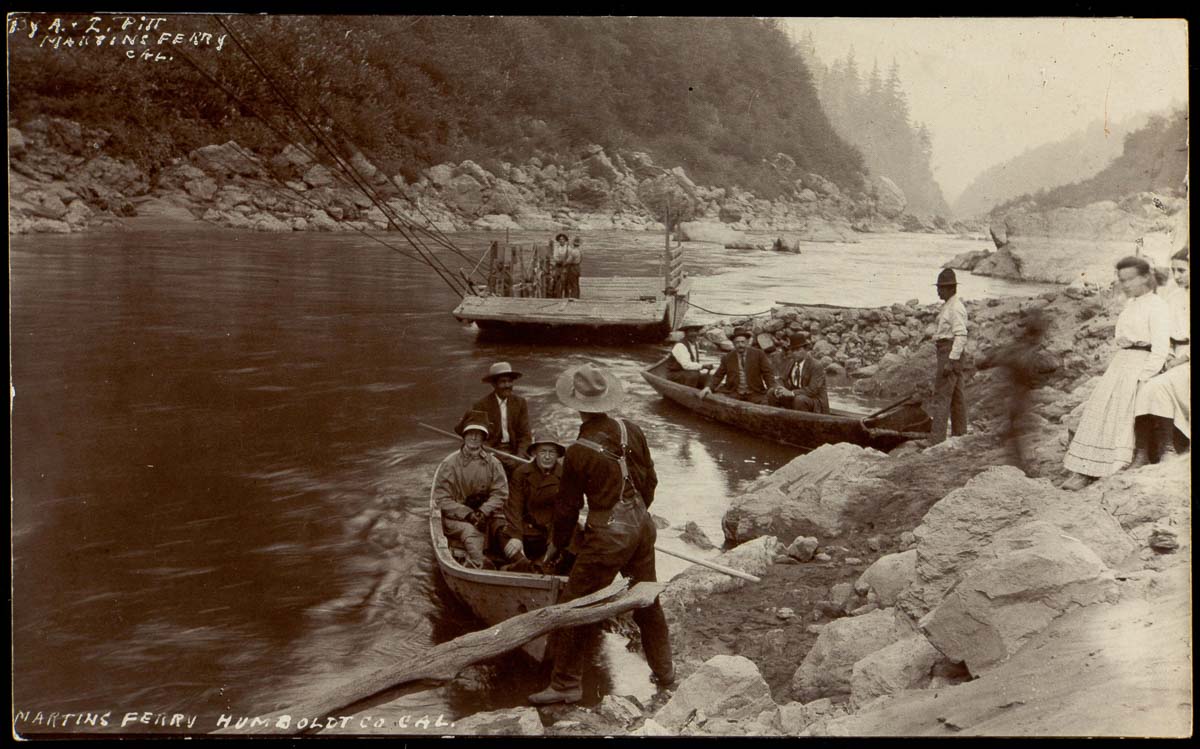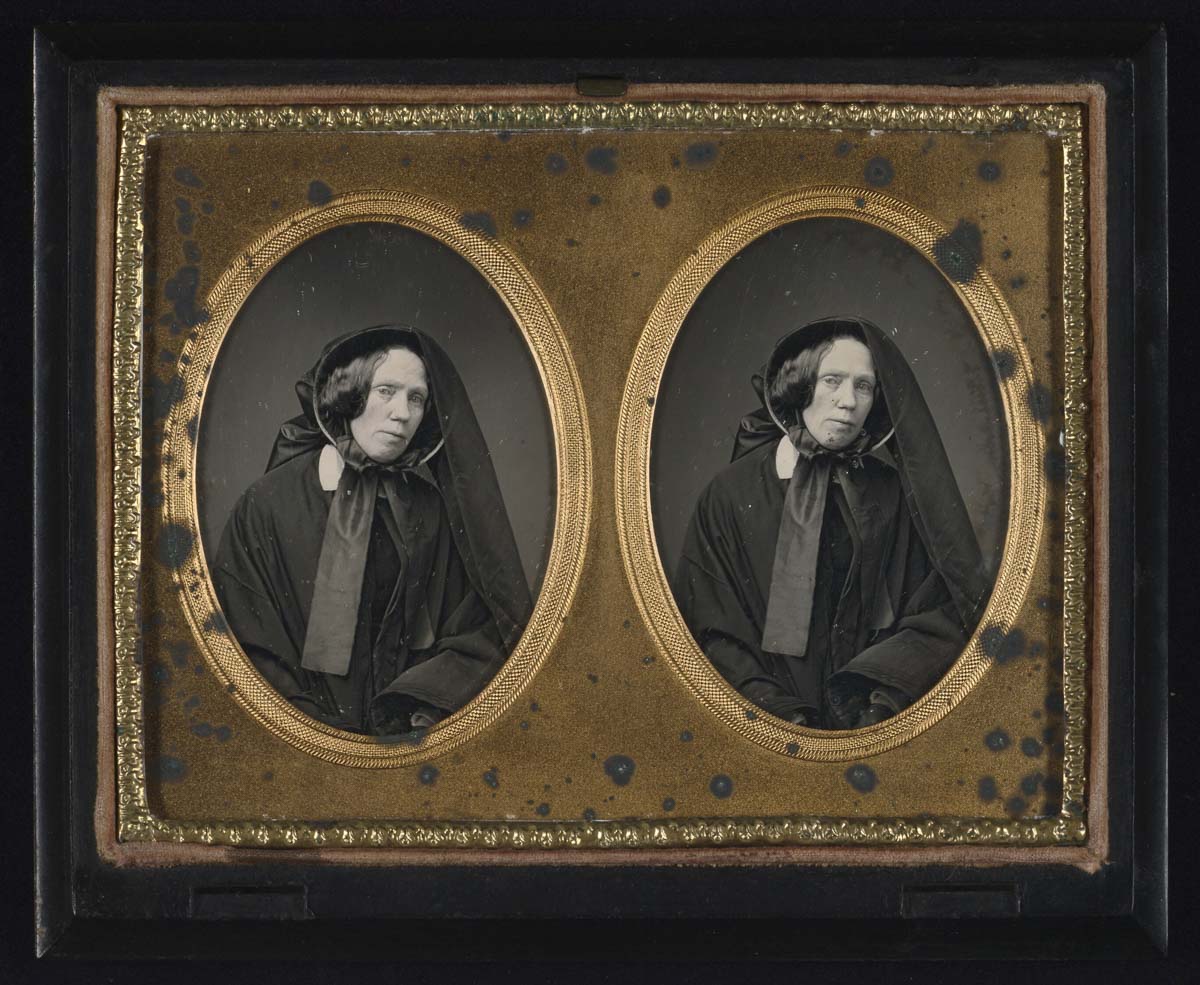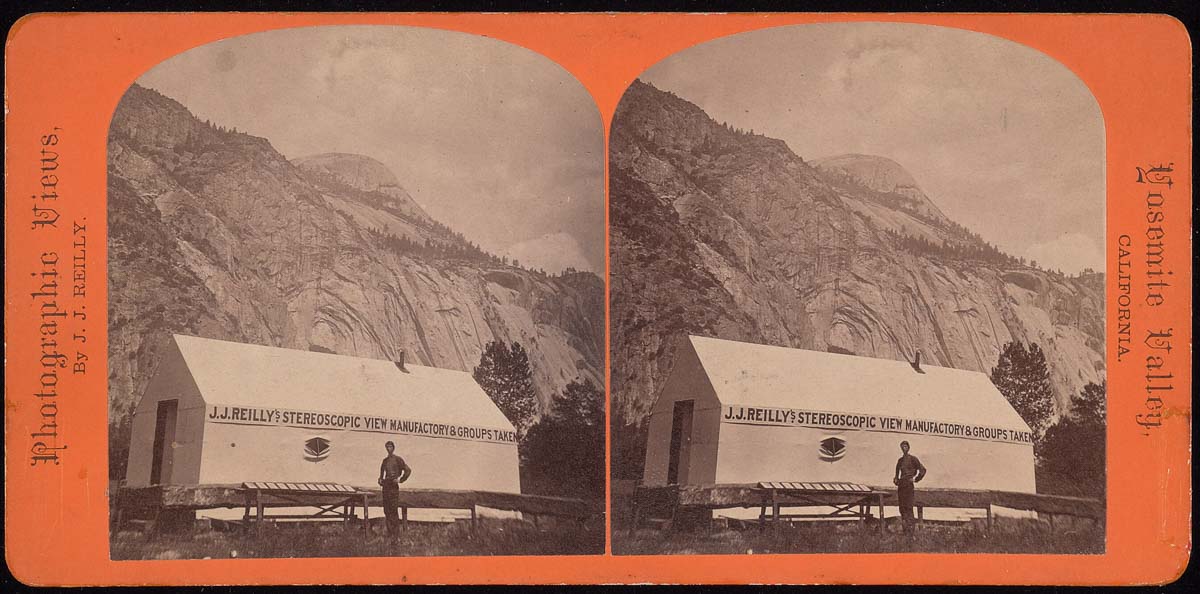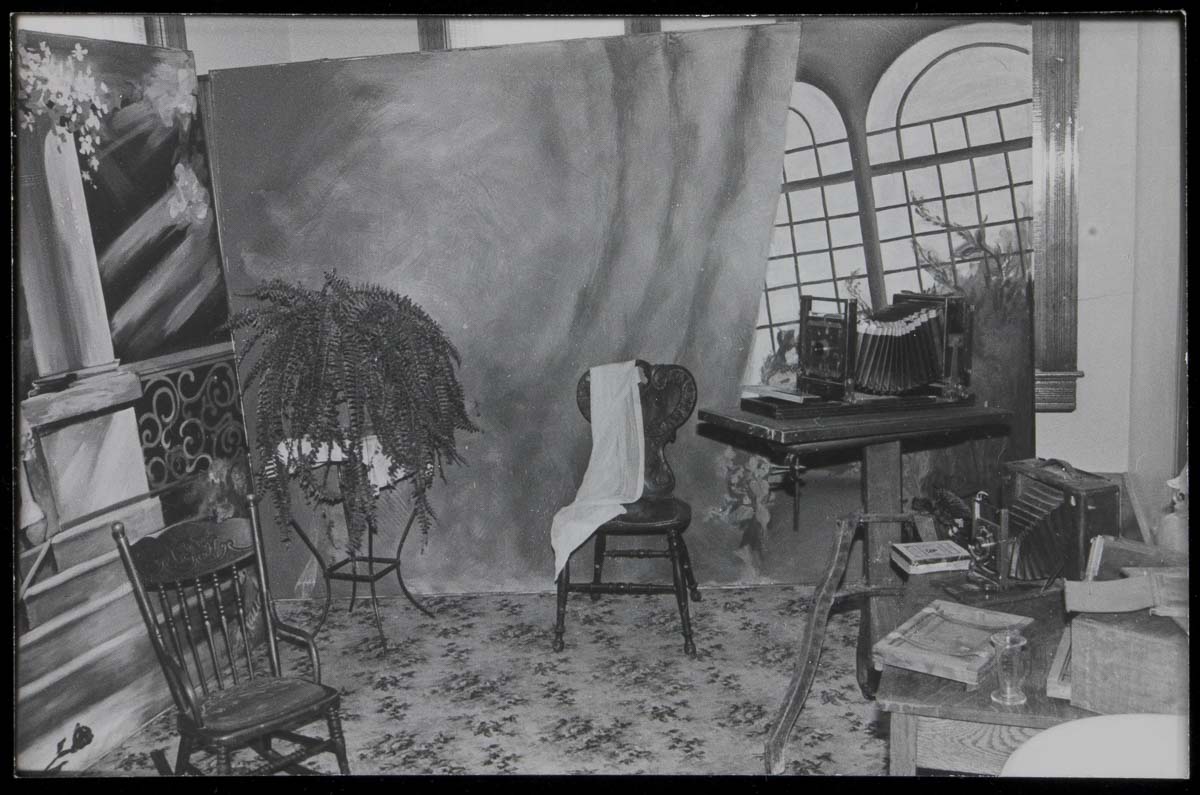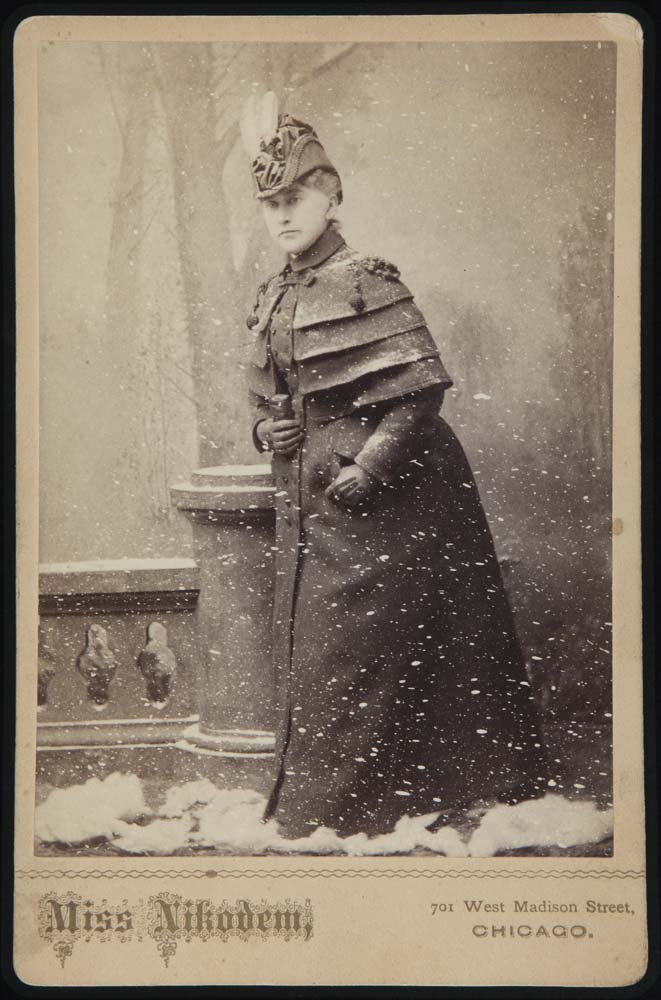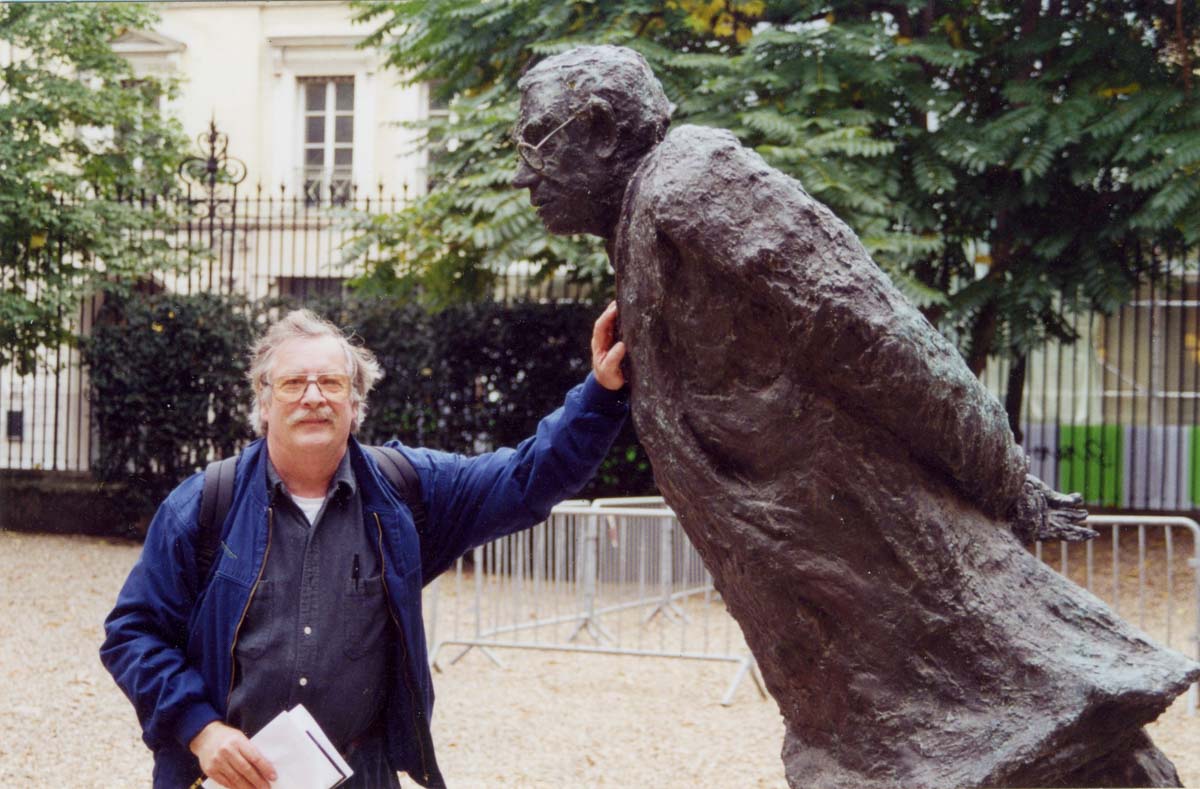- HOME
- ABOUT
- BIOS
- PROJECTS
* indicates multiple projects
- NEWS
- DONORS
- CONTRIBUTE
- APPLICATION
When Peter Eric Palmquist died in 2003 at the age of 66, he left much undone. Professionally, he was in his prime as a collector of historic photographs and as a historian of early Western photography and women photographers. Although his life was cut short, the various photohistorical interests that he pursued and the spirit of independent research that he engendered and encouraged, live on thanks to the Peter E. Palmquist Memorial Fund for Historical Photographic Research.
During his years of collecting, Palmquist amassed more than 150,000 photographs. These included scores of rare images from the earliest days of western American photography in addition to some 50,000 photographs documenting more than 100 years of history in Humboldt County, California. He was very pleased that the Beinecke Rare Book and Manuscript Library at Yale University in New Haven, Connecticut, decided to make his images and research materials a cornerstone of their Western Americana Collection. In all, 911 boxes containing his collections traveled to New Haven, some while Palmquist was alive, and the rest shortly after his sudden death.
For 32 years, Palmquist was an independent historian of photography, and he encouraged others, by actions and example, to follow their passions in pursuing independent research. He curated scores of exhibitions and delivered hundreds of lectures, and also served as a consultant and researcher on such projects as Ken Burns's television documentary, The West. He was the founding editor of the Daguerreian Annual, past president of the National Stereoscopic Association, and founder and curator of the Women in Photography International Archive. Palmquist consulted for countless museums and libraries including the Getty Museum, The Huntington Library, the Amon Carter Museum, and the Bancroft Library. He was respected throughout the photographic community as a generous and collaborative historian.
A resourceful and indefatigable writer, Palmquist published over 60 books and monographs and 340 articles. He wrote and lectured extensively on California photographer Carleton E. Watkins. In 2001, he and Thomas R. Kailbourn won the Denver Public Library's prestigious Caroline Bancroft Western History Prize for their book, Pioneer Photographers of the Far West: A Biographical Dictionary, 1840-1865 (Stanford University Press, 2000). At the time of his passing, the co-authors had just completed the manuscript of the second volume: Pioneer Photographers from the Mississippi to the Continental Divide: A Biographical Dictionary 1839-1865. They had hoped to create a series that would eventually include all of the United States.
Martha A. Sandweiss, professor of history at Princeton University commented shortly after Palmquist’s death: "Like the best of friends, Peter inspired through his generosity and support; like the best of teachers he inspired through example. What Peter cast into the world, through his books and through his spoken words, will long reverberate with his friends and colleagues. He established new ways of pursuing the history of photography, and with his collections and research notes soon to be accessible at Yale, he will be speaking to and inspiring new generations of students and researchers forever."
"For more than a quarter of a century, Peter pursued with rare passion the history of photography in the nineteenth-century west," said George Miles, curator, Western Americana Collection at the Beinecke Library. "The result is an extraordinarily rich collection that tells us how photography insinuated itself into every aspect of American life. I'm unaware of anyone else who lived and breathed the history of photography as Peter did. He made his collection to share with others, not to hide away. We feel privileged that we will be able to contribute to fulfilling his goal."
Palmquist was a professional photographer for more than 50 years. He enlisted in the United States Army where he worked for Supreme Headquarters Allied Powers Europe (SHAPE). Stationed in Paris, he photographed many heads of state as well as famous stars of stage and screen. Once he returned home, he served as the photographer at Humboldt State University for 28 years, retiring in 1989. He had also supplemented his income during that time by photographing over 750 weddings in Humboldt County and doing other commercial photography.
Locally, Palmquist was on the Board of Directors of the Clarke Memorial Museum, the Humboldt Historical Society, and the Humboldt Arts Council.
In his own words...
Reprinted from Palmquist's introduction to A Collector’s Obsession: Photographs of Humboldt County, California from the Peter E. Palmquist Collection (2001) with permission of the Peter E. Palmquist Literary Trust.
My obsession with collecting photographs began unceremoniously in the spring of 1971 when, by chance, I found myself in an antique shop in McKinleyville, California, only a few miles north of my Arcata home. The store’s proprietor contemplated my aimless browsing for a few minutes before inquiring: “Anything in particular?” “No,” I replied. Undaunted, she continued: “What do you collect?” When I mumbled, “nothing,” she persisted: “What is your occupation.” “I am a photographer,” I replied. “Ah,” she said, smiling knowingly: “Well, surely you should collect photographs!”
A short time later, just as I was about to leave the store, she presented me with a double-handful of “old” photographs with the cheerful admonition: “These will get you started.” Even before I reached my car, I had already begun to wonder about one of the photographers—“Grant, Arcata, Cal.”—seemingly an important photographer among the photographs provided by the well-intentioned shop owner.
How could I have known that, thirty years later, that double handful of images would multiply into a collection numbering approximately a quarter-million photographs? In the beginning, I really hadn’t a clue. As it turned out, the original handful of photographs had all been taken during the nineteenth century in my hometown of Arcata, two hundred and seventy miles north of San Francisco. They were also all identified as to the photographer that had taken them. Unfortunately, in those first months of collection, I did not know a carte de visite from a daguerreotype, nor had I ever heard of any of the photographers listed.
Although I had already spent more than twenty years behind a camera, I had never experienced the photography of my long-ago predecessors. Thus, while I immediately began to collect photography on my own, I lacked direction. Within a few months, I had assembled an unremarkable hodgepodge of items, including cameras, miscellaneous photographic ephemera, and scads of vintage photographs of all kinds. Not surprisingly, I had tumbled headfirst into the most common of all pitfalls that confronts each fledgling collector—an emphasis on collecting volume, rather than a focus on particular elements within the whole.
Part of the collecting incentive was that photographs were generally cheap. A fine daguerreotype went for less than ten dollars, and many could be had for less than three. Portrait photographs were seldom sold for more than fifty cents, and it was not uncommon to see large numbers of them as cheap as ten cents apiece. Tintypes were commonly fifty cents, while the lavish, Victorian-era, family albums were seldom more than fifteen dollars. Outdoor photographs, especially town scenes, were another matter. These, along with stereographs, had already begun to interest local collectors. Nonetheless, it was unusual for a fine town view to fetch more than ten dollars, while twin-imaged stereographs rarely surpassed one dollar apiece. This it not to say that these artifacts were “dirt” cheap during the 1970s, but they were most certainly a bargain by today’s standards. It also helped, that I was apparently the only person in Humboldt County that seriously collected old photographs.
As I became more deeply involved in searching for photographica—a catchall term for all types of photography and photographic artifacts—I also began to realize that there was a growing trend towards collecting photography, and that it was already underway in other parts of the world. There had even been a few articles on the subject in photography magazines. By the early 1970s, there were several networks of collectors underway, and by the mid-1970s several of these had already begun to organize and publish specialty newsletters, primarily in the area of collecting cameras and/or stereographs. I joined a couple of collectors’s organizations and soon began to receive catalogues offering photographica for sale. Before long, I found myself beginning to understand the jargon of the photo-collecting field—photographic processes were described, desirable characteristics of objects and images noted, and prices established.
Nonetheless, I found myself increasingly drawn to the unknown photographers of my hometown. I had never conducted research of any kind and had no previous interest in history. One day, a kindly reference librarian suggested that I have a look at the cache of early-day local newspapers available on microfilm. The Humboldt Times, it turned out, began in 1854 only four years after the discovery of Humboldt Bay and the beginnings of white settlement had gotten underway. The Arcata Union, it turned out, had ample evidence concerning Grant, the photographer whose name had previously caught my eye. Using every spare minute, I began to devour the newspapers looking for mentions and notices of photographers that I began to list. Before long, some names became familiar to me, and in some cases the fabric of their lives began to be restored. I learned, for example, that Grant’s full name was Martin Howe Grant. Another intriguing photographer had signed his photographs “A. P. Flaglor” and I was amused to discover that “A. P.” stood for “Amasa Plummer” Flaglor. I was also surprised by how many local photographers there had been before 1900.
As my interest deepened, I met many wonderful individuals who were eager to share their family photographs we me. In each case, I took notes, which I added to my growing documentation about local photography. I also made many copy negatives of images to add to my ever-expanding files documenting local photographers. Today, there are thousands of files on local photographers, nearly seven hundred and fifty of which, represent female photographers.
By 1973, I had become somewhat of an expert on Humboldt County photographers. I also began to want to share my knowledge with others. Since I did not know how to write effectively, my first four articles were written by others—three by a Humboldt State University graduate student named David Smith, and the fourth by journalist Al Steen, who also edited Pacifica Magazine. It was at about this time that I became acquainted with A. W. Ericson’s photographs and decided that it was time to write a book, Fine California Views: The Photographs of A. W. Ericson (1975), that was my first attempt at narrative writing. Although the book was well received, my naïveté and lack of writing prowess was painfully evident. By this time, however, I was absolutely hooked on my need to search out the lives of pioneer photographers, a search which quickly expanded to include all the rest of California and also the American Far West.
Today, some thirty years after that fateful visit to the antique shop, I continue to collect, research and write—some sixty books and more than three hundred and thirty articles—documenting the photographers of yesteryear. A chance encounter had led to an obsession.
